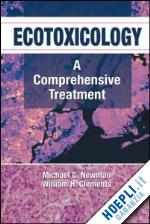Integrating ecotoxicological concepts across a range of hierarchical levels, Ecotoxicology: A Comprehensive Treatment focuses on the paradigms and fundamental themes of ecotoxicology while providing the detail and practical application of concepts often found in more specialized books. By synthesizing the best qualities of a general textbook and the narrower, more specific scope of a technical reference, the authors create a volume flexible enough to cover a variety of instructional vantages and thorough enough to engender a respect for the importance of understanding and integrating concepts from all levels of biological organization. Divided into six sections, the book builds progressively from the biomolecular level toward a discussion of effects on the global biosphere. It begins with the fundamentals of hierarchical ecotoxicology and vantages for exploring ecotoxicological issues. The second section introduces organismal ecotoxicology and examines effects to biochemicals, cells, organs, organ systems, and whole organisms, and bioaccumulation and bioavailability of contaminants. Population ecotoxicology, section three, places the discussion in the larger context of entire populations by analyzing epidemiology, population dynamics, demographics, genetics, and natural selection. Section four encompasses issues of community ecotoxicology. This section presents biotic and abiotic factors influencing communities, biomonitoring and community response, and the application of multimetric and multivariate approaches. Section five evaluates the entire ecosystem by describing assessment approaches, identifying patterns, analyzing relationships between species, and reviewing the effects of global atmospheric stressors. A detailed conclusion integrating the concepts discussed and promoting a balanced assessment of the overarching paradigms rounds out the coverage in section six.











